 W
W1KUNS-PF was the first Kenyan owned satellite to be launched into space. The cubesat was developed and assembled by the University of Nairobi. Technical support was provided by Japan's Aerospace Exploration Agency and it was launched from the International Space Station after being delivered to the station by a SpaceX Falcon 9 rocket.
 W
WThree Corner Satellite consisted of three student-built microsatellites flying in formation. Primary mission objectives were to demonstrate formation flying, provide stereoscopic imaging of cloud formations, and demonstrate distributed and autonomous operations.
 W
WAAU CubeSat was a CubeSat built and operated by students from Aalborg University in Denmark. AAU CubeSat was launched on 30 June 2003 from the Plesetsk Cosmodrome on a Russian Rockot launch vehicle.
 W
WAAUSat-2, also spelled as AAUSAT-II, is the second student-built CubeSat built and operated by students from Aalborg University in Denmark. It was launched 28 April 2008 05:53:51 UTC from Satish Dhawan Space Centre in India on a Polar Satellite Launch Vehicle (PSLV) launch vehicle. AAUSat-2 carries a gamma radiation sensor.
 W
WAAUSat-3,, is the third CubeSat built and operated by students from the Aalborg University in Denmark. It was launched on 25 February 2013 from the Satish Dhawan Space Centre in India on a Polar Satellite Launch Vehicle (PSLV) launch vehicle (PSLV-C20). AAUSat-3 carries two Automatic Identification System receivers as the main payload.
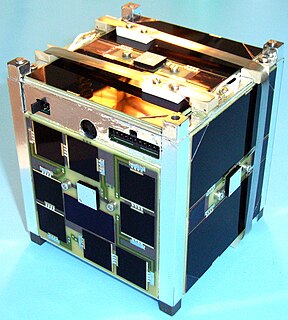 W
WBeeSat-1 or Berlin Experimental and Educational Satellite 1, is a German satellite operated by the Technical University of Berlin. The spacecraft is a single unit CubeSat, which was designed to test systems intended for use on future spacecraft, including a new design of reaction wheel. It has also been used for amateur radio, and is equipped with a small camera.
 W
WBRAC Onnesha was the first nanosatellite built in Bangladesh to be launched into space. The satellite was designed and built in conjunction with Kyushu Institute of Technology Birds-1 program, which has the goal of helping countries build their first satellite. It was designed and built over a two-year period.
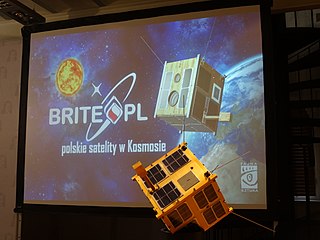 W
WBright(-star) Target Explorer or BRITE, also known as Canadian Advanced Nanospace eXperiment 3 (CanX-3) is a constellation of six nanosatellites operated by a consortium of universities from Canada, Austria and Poland.
 W
WThe Centre Spatial Universitaire (CSU) Montpellier-Nîmes is a division of the University of Montpellier. Its purpose is to educate students in space sciences through the design, production and testing of nanosatellites. The CSU was created to consolidate nanosatellite activities that were initiated in 2006 by the RADIAC team of the Institut d'Electronique et des Systèmes, a research institute also affiliated with the university.
 W
WChasqui I is a one-kilogram nanosatellite project that was launched by hand from the International Space Station during a spacewalk on August 18, 2014. The concept satellite was equipped with two cameras, a visible and an infrared, which could take photos of the Earth.
 W
WColorado Student Space Weather Experiment (CSSWE) was the sixth National Science Foundation sponsored CubeSat mission. It was built by students at the University of Colorado at Boulder with advising from professionals at the Laboratory for Atmospheric and Space Physics. The CSSWE mission was a joint effort by the University of Colorado's Department of Aerospace Engineering Sciences and Laboratory for Atmospheric and Space Physics. The mission principal investigator was Prof. Xinlin Li, and the Co-PIs are Prof. Scott Palo and Dr. Shri Kanekal. The project manager for the project was Dr. Lauren Blum, the system engineer was Dr. David Gerhardt, and the instrument scientist was Dr. Quintin Schiller.
 W
WCompass-1 is a German amateur CubeSat picosatellite, built and operated in the late 2000s by Aachen University of Applied Science. It was launched by the Indian Space Research Organisation, aboard a PSLV rocket as a secondary payload to the CartoSat-2A primary spacecraft on 28 April 2008. It was launched into a Geocentric orbit with an altitude of 597 km. Its primary mission is remote sensing; however, it also contains some technology demonstration experiments regarding the use of small satellites and GPS tracking.
 W
WDelfi-C3 is a CubeSat satellite constructed by students at the Delft University of Technology in the Netherlands. It is a 3-unit CubeSat, and was launched at 03:53:42 on 28 April 2008, as part of the NLS-4 mission, aboard a PSLV rocket, from the Second Launch Pad at the Satish Dhawan Space Centre in India. The launch was contracted by ISRO, through Antrix Corporation and UTIAS.
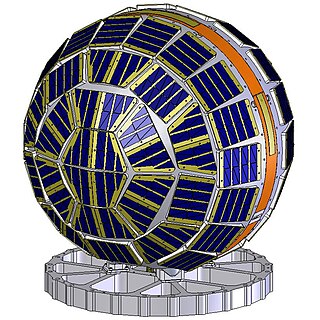 W
WDANDE is a 50 kg class spacecraft developed by the University of Colorado Boulder was the winner of the 5th iteration of the Air Force Research Laboratory's University Nanosat Program.
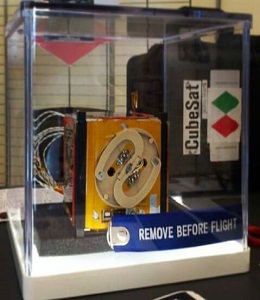 W
We-st@r is a miniaturised satellite built by the Politecnico di Torino. It is a 1U CubeSat design with a 10 cm side and a mass not exceeding 1.33 kg.
 W
We-st@r-II is a miniaturized satellite designed and built by Polytechnic University of Turin, as part of the "Fly Your Satellite" program of the European Space Agency.
 W
WEQUiSat was a 1U CubeSat designed and built by Brown Space Engineering, an undergraduate student group at Brown University's School of Engineering. EQUiSat's mission was to test a battery technology that had never flown in space which powered an beacon that was designed to be visible from Earth.
 W
WESTCube-1 is the first Estonian satellite and first satellite in the world to attempt to use an electric solar wind sail (E-sail). It was launched on 7 May 2013 aboard Vega VV02 carrier rocket and successfully deployed into orbit. The CubeSat standard for nanosatellites was followed during the engineering of ESTCube-1, resulting in a 10×10×11.35 cm cube, with a volume of 1 liter and a mass of 1.048 kg.
 W
WF-1 is a CubeSat built by FSpace laboratory at FPT University, in Hanoi, Vietnam, in partnership with Angstrom Space Technology Center (ASTC), Uppsala University, Sweden and Nanoracks LLC, United States. Its mission is to train young engineers and students about aerospace engineering and evaluate an advanced three-axis magnetometer, Spin-Dependent Tunneling Magnetometer (SDTM) designed in Sweden by ASTC.
 W
WFormation Autonomy Spacecraft with Thrust, Relnav, Attitude and Crosslink is a pair of nanosatellites developed and built by students at The University of Texas at Austin. The project is part of a program sponsored by the Air Force Research Laboratory (AFRL), whose goal is to lead the development of affordable space technology. The FASTRAC mission will specifically investigate technologies that facilitate the operation of multiple satellites in formation. These enabling technologies include relative navigation, cross-link communications, attitude determination, and thrust. Due to the high cost of lifting mass into orbit, there is a strong initiative to miniaturize the overall weight of spacecraft. The utilization of formations of satellites, in place of large single satellites, reduces the risk of single point failure and allows for the use of low-cost hardware.
 W
WGhanaSat-1 was the first Ghanaian nanosatellite to be launched into space. It was designed and built in two years in conjunction with the Kyushu Institute of Technology Birds-1 program, which has the goal of helping countries build their first satellite.
 W
WHuskySat-1 is an artificial satellite designed at the University of Washington. It was launched by Cygnus NG-12 from Mid-Atlantic Regional Spaceport Launch Pad 0 on Wallops Island, Virginia to low earth orbit on November 2, 2019. It is a CubeSat, and will demonstrate onboard plasma propulsion and high gain telemetry for low Earth orbit that would be a precursor for an attempt at a larger CubeSat designed for orbital insertion at the Moon.
 W
WIrvine CubeSat STEM Program (ICSP) is a joint educational endeavor to teach, train and inspire the next generation of STEM professionals. ICSP involves students from six high schools from Irvine, California, and its main objective is to assemble, test, and launch a CubeSat into low Earth orbit.
 W
WLibertad 1 is a single CubeSat built by the Space Program of the Sergio Arboleda University in Colombia. It is the first Colombian satellite sent to orbit. It was launched aboard a Dnepr rocket on April 17, 2007 from the Baikonur Cosmodrome, Kazakhstan and became the first Colombian satellite to orbit the Earth. It used a telemetric payload to keep it in communication with the University. It was expected to have a 50-day lifespan, however news reports two years after it was launched stated the satellite was still working and sending information, passing over Colombia twice a day.
 W
WLitSat-1 was one of the first two Lithuanian satellites. It was launched aboard the second Cygnus spacecraft along with 28 Flock-1 CubeSats aboard an Antares 120 carrier rocket flying from Pad 0B at the Mid-Atlantic Regional Spaceport on Wallops Island. The launch was scheduled to occur in December 2013, but later was rescheduled to 9 January 2014 and occurred then. The satellite was deployed from the International Space Station via the NanoRacks Cubesat Deployer on February 28, 2014. Three Lithuanian words will be broadcast from space "Lietuva myli laisvę". Launch of satellites Lituanica SAT-1 and LitSat-1 was broadcast live in Lithuania.
 W
WLituanicaSAT-1 was one of the first two Lithuanian satellites. It was launched along with the second Cygnus spacecraft and 28 Flock-1 CubeSats aboard an Antares 120 carrier rocket flying from Pad 0B at the Mid-Atlantic Regional Spaceport on Wallops Island to the International Space Station. The launch was scheduled to occur in December 2013, but later was rescheduled to 9 January 2014 and occurred then. The satellite was broadcasting greetings of Lithuanian president, Mrs. Dalia Grybauskaitė. The satellite was deployed from the International Space Station via the NanoRacks CubeSat Deployer on February 28, 2014. All LituanicaSAT-1 subsystems have been turned on, tested and proved to be working properly. The mission is considered a complete success by its team of engineers. The mission ended upon the reentry and disintegration of the satellite on July 28, 2014.
 W
WMaSat-1 is the first indigenous Hungarian satellite, developed and built by students at the Technical University of Budapest. The 1U CubeSat-type satellite was launched into low Earth orbit on 13 February 2012. The satellite provided telemetric data as well as VGA resolution color images at the 70 cm amateur radio wavelength received at the tracking center at Budapest. The center was tested on 31 March 2009 with the help of Charles Simonyi on board the International Space Station. With the successful launch of MaSat-1, Hungary became the 47th nation to orbit a satellite. Between 9 and 10 January 2015, the satellite reentered into the atmosphere.
 W
WMazaalai was a Mongolian nanosatellite CubeSat that was launched into space on 3 June 2017 as part of the SpaceX CRS-11 mission.
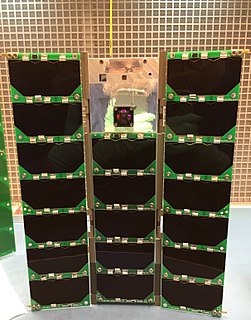 W
WThe Miniature X-ray Solar Spectrometer (MinXSS) CubeSat was the first launched National Aeronautics and Space Administration Science Mission Directorate CubeSat with a science mission. It was designed, built, and operated primarily by students at the University of Colorado Boulder with professional mentorship and involvement from professors, scientists, and engineers in the Aerospace Engineering Sciences department and the Laboratory for Atmospheric and Space Physics, as well as Southwest Research Institute, NASA Goddard Space Flight Center, and the National Center for Atmospheric Research's High Altitude Observatory. The mission principal investigator is Dr. Thomas N. Woods and co-investigators are Dr. Amir Caspi, Dr. Phil Chamberlin, Dr. Andrew Jones, Rick Kohnert, Professor Xinlin Li, Professor Scott Palo, and Dr. Stanley Solomon. The student lead was Dr. James Paul Mason, who has since become a Co-I for the second flight model of MinXSS.
 W
WNCube was a series of two Norwegian satellites, made by students at several Norwegian universities and university colleges. Due to problems during launch (NCube-1) and deployment into orbit (NCube-2), neither of the satellites became operational.
 W
WNigeria EduSat-1 was a Nigerian nanosatellite built by the Federal University of Technology Akure (FUTA), created in conjunction with the Japanese Birds-1 program. It was Nigeria's first satellite built by a university. It was launched from the Japanese Kibō module of the International Space Station.
 W
WPISat is a remote sensing nanosatellite developed by the PES University, Bengaluru.
 W
WPratham is an Indian ionospheric research satellite which will be operated by the Indian Institute of Technology Bombay as part of the Student Satellite Initiative. Its primary mission is to count electrons in the Earth's ionosphere.
 W
WPW-Sat is a series of satellites that includes the first Polish artificial satellite which was launched 13 February 2012 from ELA-1 at Guiana Space Centre aboard Italian-built Vega launch vehicle during its maiden voyage. PW-Sat1's mission was to test experimental elastic solar cells, as well as an orbital decay technology consisting of a "tail" designed to speed re-entry. It was expected to last for 1 year.
 W
WPW-Sat2 is a CubeSat satellite constructed by the Faculty of Power and Aeronautical Engineering of Warsaw University of Technology in cooperation with the Space Research Centre of the Polish Academy of Sciences.
 W
WRadio Aurora Explorer (RAX) is the first National Science Foundation sponsored CubeSat mission. The RAX mission is a joint effort between SRI International in Menlo Park, California and the University of Michigan in Ann Arbor, Michigan. The chief scientist at SRI International, Dr. Hasan Bahcivan, led his team at SRI to develop the payload while the chief engineer, Dr. James Cutler, led a team of students to develop the satellite bus in the Michigan Exploration Laboratory. There are currently two satellites in the RAX mission.
 W
WRAX-2 is a CubeSat satellite built as a collaboration between SRI International and students at the University of Michigan College of Engineering. It is the second spacecraft in the RAX mission. The RAX-1 mission ended after approximately two months of operation due to a gradual degradation of the solar panels that ultimately resulted in a loss of power. RAX team members applied the lessons learned from RAX-1 to the design of a second flight unit, RAX-2, which performs the same mission concept of RAX-1 with improved bus performance and additional operational modes. Science measurements are enhanced through interactive experiments with high power ionospheric heaters where FAI will be generated on demand.
 W
WROBUSTA is a nano-satellite scientific experiment developed by the University of Montpellier students as part of a Centre National d'Études Spatiales (CNES) call for student projects in the field of orbital systems.
 W
WROBUSTA-1B is a nano-satellite (Cubesat) scientific experiment developed by the University of Montpellier students, a successor to the ROBUSTA satellite, which was launched in February 2012 and lost soon after.
 W
WSRMSAT is a Nanosatellite built by students at Sri Ramaswamy Memorial University(SRM Institute of Science and Technology, Chennai) in India. The satellite is an Indian Technology demonstration and Earth observation satellite which is operated by the SRM Institute of Science and Technology. This nanosatellite was used to monitor Greenhouse gases in atmosphere.
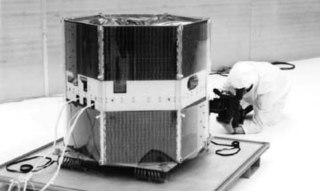 W
WThe Student Nitric Oxide Explorer (SNOE), also known as Explorer 72 and STEDI 1, was a small scientific satellite which studied the concentration of nitric oxide in the thermosphere. It was launched in 1998 as part of NASA's Explorers program. The satellite was the first of three missions developed within the Student Explorer Demonstration Initiative (STEDI) funded by NASA. The satellite was developed by the University of Colorado Boulder's Laboratory for Atmospheric and Space Physics (LASP) and had met its goals by the time its mission ended with reentry on December 13, 2003.
 W
WSwissCube-1 is a Swiss satellite operated by École Polytechnique Fédérale de Lausanne (EPFL). The spacecraft is a single unit CubeSat, which was designed to conduct research into nightglow within the Earth's atmosphere, and to develop technology for future spacecraft. It has also been used for amateur radio. It was the first Swiss satellite to be launched.
 W
WUniSat-6 is an Italian micro-satellite developed by GAUSS Srl and launched in 2014. The satellite is built in a 0.4x0.4x0.4m box-shaped bus, optimized for piggy-back launch. All instruments are powered by solar cells mounted on the spacecraft body, with maximal electrical power of 11W. The satellite has no on-orbit propulsion; it makes use of an attitude stabilization system based on permanent magnets.